According to the Bible, Jesus Christ was crucified on a hill called Golgotha just outside of ancient Jerusalem — but where is it?
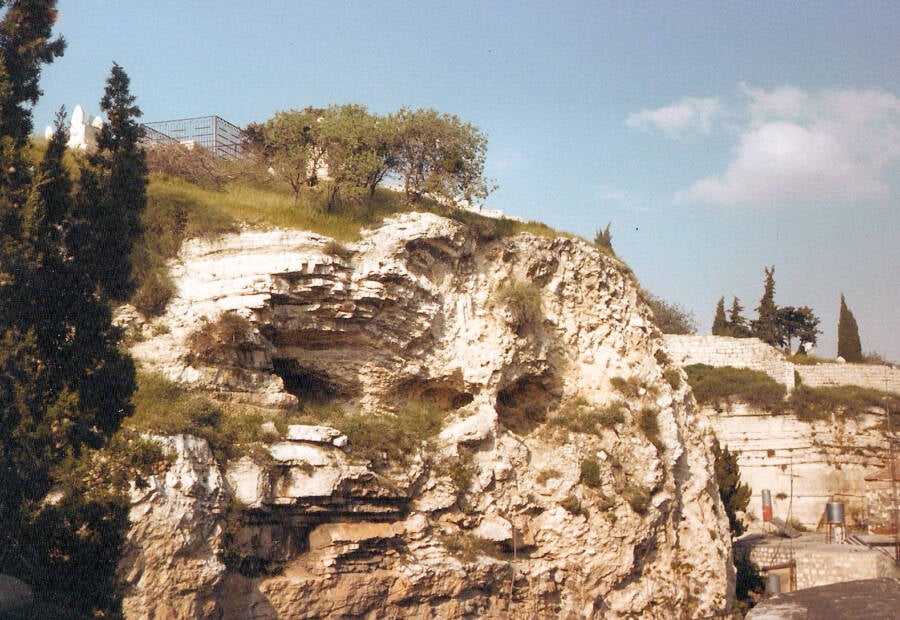
R~P~M/FlickrSome believe that the contemporary location of Golgotha is this outcrop of skull-shaped rocks in Jerusalem.
There’s plenty to interpret in the Bible, but on one point, the book is quite clear. After Jesus Christ was condemned to death by Pontius Pilate, the Christian Messiah was crucified at a place called Golgotha.
So where is Golgotha?
Thought to be the place where Jesus was both killed and buried — and resurrected, according to the Bible — Golgotha is an important site for Christians. But even though the Church of the Holy Sepulchre was purportedly built on the site of the crucifixion in the fourth century C.E., religious scholars continue to debate about Golgotha’s exact location today.
Here’s everything you need to know about Golgotha, from the uncertain meaning of its name, to what the Bible says about its role in the crucifixion, to the ongoing debate over its location and the location of Jesus’ tomb.
What Is Golgotha, The “Place Of Skulls”?
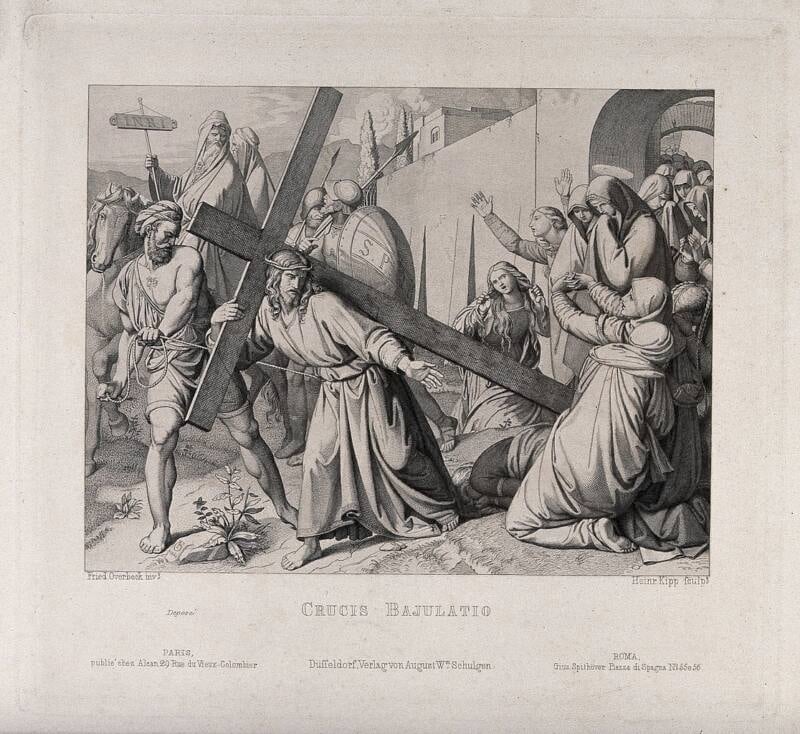
Wellcome ImagesA 19th-century depiction of Jesus Christ carrying his cross to Golgotha.
Said to be located just outside Jerusalem, Golgotha is mentioned multiple times in the Bible. The Gospels of John, Mark, Matthew, and Luke all refer to the site. In many of these references, Golgotha, which is also sometimes called Calvary, is described as the “place of the skull” or the “place of skulls.”
So what exactly does this signify? To modern scholars, there are three possible interpretations of Golgotha’s strong connection to skulls.
The first is that Golgotha was a place routinely used for executions. The early Christian scholar Jerome of Stridon (who likely lived between 346 and 420 C.E.) postulated this when he wrote: “outside the city and without the gate there are places wherein the heads of condemned criminals are cut off and which have obtained the name of Calvary — that is, of the beheaded.”
However, Christianity.com notes that there’s no evidence that a first-century execution site for Jews existed in the area. If such a site did exist, the victims would likely be allowed burial (so there wouldn’t be skulls piled up).
The second possibility is that Golgotha was so named to describe the shape of the region surrounding it. The site could have been an outcropping of rocks with pits that looked like skeletal eye sockets and a mouth.
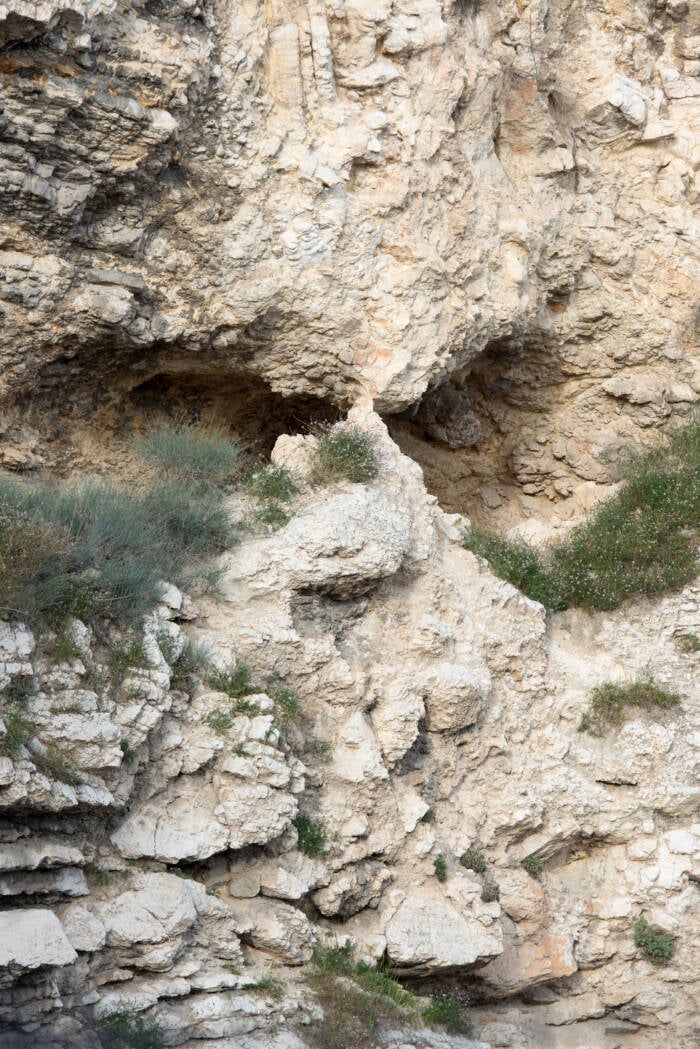
Philip Sharp/Alamy Stock PhotoOne theory is that Golgotha, or Calvary, got its name from the shape of the region.
The final theory suggests that the “place of the skull” got its name from the skull of Adam. According to this theory — which was supported by early Christian leaders — the Bible’s first man was buried at Golgotha. Thus, Jesus was crucified at the “place of the skull,” or, more specifically, Adam’s skull.
Though religious scholars may disagree on how Golgotha got its name, they can all agree it’s where Jesus Christ was crucified, according to the Bible.
The Crucifixion Of Jesus Christ At Golgotha
Many questions about Jesus Christ remain (including his real name, his race, his appearance, his birthday, and even his height). However, the Bible is quite clear that the Christian Messiah was crucified at Golgotha after he was sentenced to death by Pontius Pilate, the Roman governor of Judaea.
Indeed, the Gospels of Matthew, Mark, and John describe the site of Jesus Christ’s crucifixion at Golgotha in almost identical terms.

Public DomainThe crucifixion of Jesus Christ took place at Golgotha, just outside of ancient Jerusalem, according to the Gospels.
“[T]hey forced him to carry the cross,” Matthew explains, “They came to a place called Golgotha (which means ‘the place of the skull’)… When they had crucified him, they divided up his clothes by casting lots.”
Meanwhile, the Gospel of Mark writes: “[T]hey forced him to carry the cross. They brought Jesus to the place called Golgotha (which means ‘the place of the skull’)… And they crucified him.”
And John states: “Carrying his own cross, he went out to the place of the Skull (which in Aramaic is called Golgotha). There they crucified him, and with him two others — one on each side and Jesus in the middle.”
Significantly, John and Matthew also describe the aftermath of the crucifixion in similar ways. Both books say that Pilate agreed to give Jesus’ body to a wealthy disciple named Joseph from Arimathea. Joseph then buried Jesus’ body in a tomb, which John specifies was “nearby.”
Then, Mary Magdalene took up a post outside. And that’s how she purportedly witnessed his resurrection three days later.
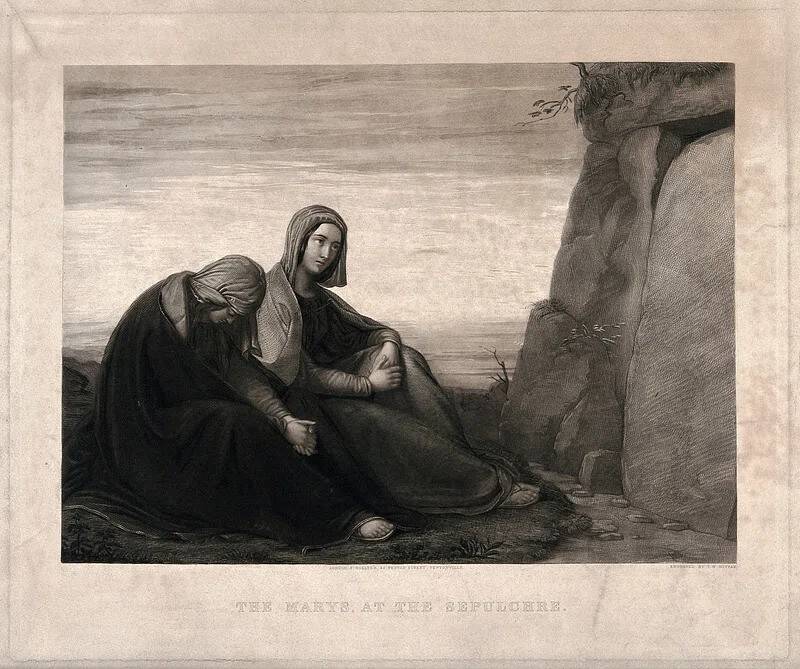
Public DomainMary Magdalene at Jesus Christ’s tomb, which was seemingly near his crucifixion site at Golgotha.
All of this makes Golgotha an incredibly important site, as the Bible suggests it’s the place where Jesus Christ died, was buried, and was resurrected.
So where exactly is it?
Where Is Jesus’ Crucifixion Site And Tomb? Inside The Ongoing Debate
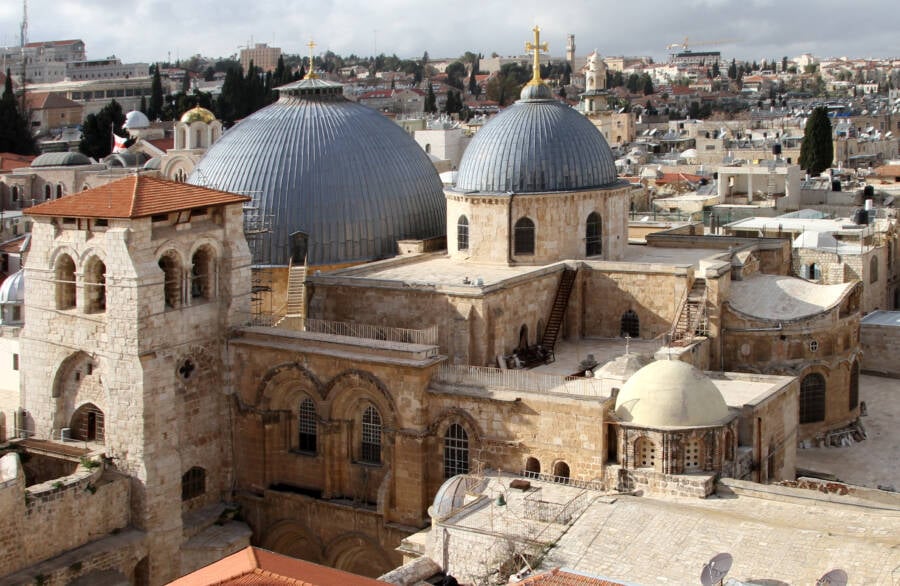
Gerd Eichmann/Wikimedia CommonsJerusalem’s Church of the Holy Sepulchre was built in the fourth century C.E., purportedly on the site of Golgotha.
In the early fourth century C.E., Helena of Constantinople, the mother of Roman emperor Constantine the Great, traveled to Jerusalem alongside the historian Eusebius. There, she purportedly found the region where Jesus had been buried. The Roman emperor Hadrian had had pagan temples built over the site, but Helena ordered them torn down. After an excavation, she allegedly recovered the “True Cross” of Jesus’ crucifixion and Jesus’ tomb.
After Constantine learned about this, he ordered the construction of the Church of the Holy Sepulchre at the site. It purportedly encompasses Golgotha, where Jesus had been crucified, as well as the site of his tomb.
Thus, it is regularly argued that Jesus’ tomb is located at the Church of the Holy Sepulchre. Visitors to the church today can visit the purported tomb — as well as the “Rock of Calvary” where Jesus was said to be crucified.
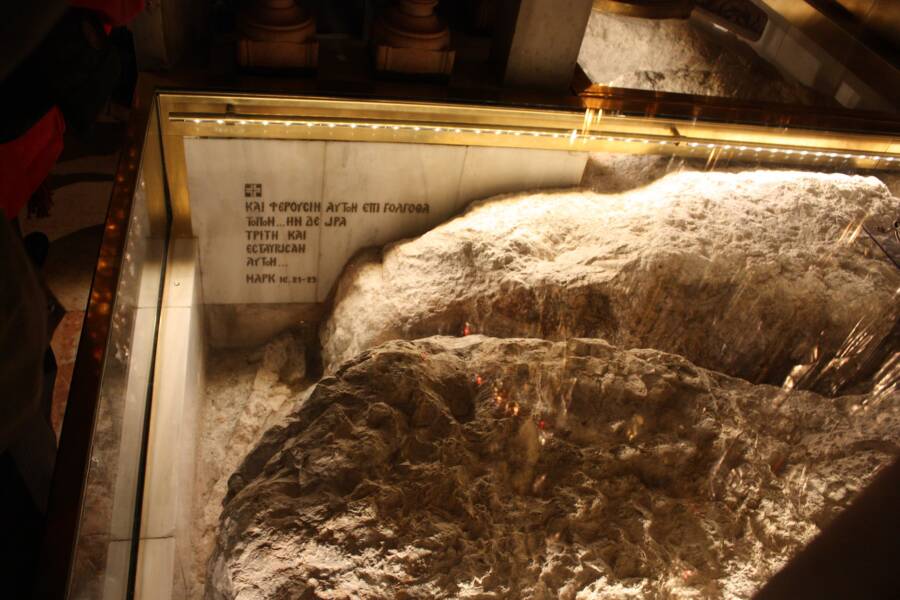
Wknight94/Wikimedia CommonsThe Church of the Holy Sepulchre purportedly holds remains of Golgotha, where Jesus Christ was crucified and buried.
However, not everyone agrees that this is where Jesus was buried.
For one, the Church of the Holy Sepulchre is located within Jerusalem. But in John 19:20, Golgotha is described as being “near the city.” And Hebrews 13:12 declares that Jesus Christ died “outside the gate.”
Though Jerusalem’s city walls have certainly changed over the centuries, some argue that Golgotha is not located within the Church of the Holy Sepulchre but somewhere else. Some say it’s actually Gordon’s Calvary, a rocky hill that some believe resembles a skull. Near Gordon’s Calvary is also another ancient tomb, the so-called Garden Tomb. (That said, archaeologists believe that the Garden Tomb was built earlier than the first century C.E.)

Library of CongressGordon’s Calvary in Jerusalem, as seen circa 1934-1939.
But for some Christians, the location of Golgotha is less important than the event of the crucifixion itself. Whether it took place at Gordon’s Calvary or within the site of the Church of the Holy Sepulchre or someplace else entirely, they prefer to focus on Jesus’ death and what it means to Christians — and not debate over the exact location where he was executed.
“We cannot know with 100 percent certainty, and it is not important that we know,” the organization Grace Communion International explained on their website. “Salvation does not hinge on a particular location, but on the reality of the death and resurrection of Jesus Christ.”
After reading about Golgotha, the Biblical place where Jesus Christ was crucified, discover the story of the Ark of the Covenant, the sacred relic of ancient Israelites said to hold the original Ten Commandments. Or, see how the legend of the Holy Grail developed over the centuries. Then, learn about how old the Virgin Mary was when she had Jesus.





